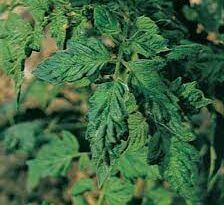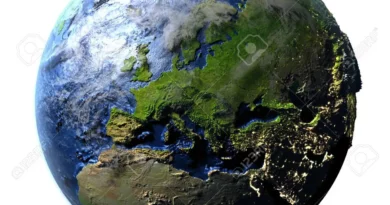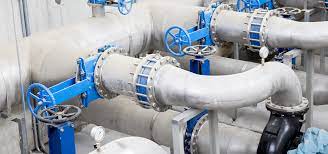Oil Pollution in the Environment: Extent, Effects, Sources and Fate
There is however generation of waste and environmental pollution issues that have been closely associated with various processes involved in the exploration and refining of crude oil.
This section is intended to survey the different global episodes of remarkable oil pollutions and also local oil pollution issue with their resultant effects on the ecosystem, human and socioeconomic activities.
The importance of this knowledge is to underscore the need for cleaner technology and sustainable approach to crude oil exploration and refining.
Global Episodes of Oil Pollution
There have been a number of crude oil based pollutions in different countries of the world. Some of these pollutions were as a result of accident from transportation in vessels/ship on the waterways while some are from the exploration of crude oil.
One of the notable accidents, which was even considered as one of the most devastating human caused environmental disasters, was the popular Exxon Valdez case of March 24, 1989.
An Exxon Shipping Company owned oil vessel/tanker travelling to Long Beach, California, ran into a Bligh Reef in Alaska and spilled 10.8 million gallons of crude oil over some days. The spill caused the death of sea animals with long term effects.
The clean-up was with the use of chemical dispersant (surfactant) to break the oil slick and disperse it as oil droplet after which mechanical clean- up was carried oil. Exxon incurred an estimated cost of $2 billion to clean-up the spill and a further $1 billion to settle related civil and criminal charges.
Beside the cases of oil spill as a result of accident, the pollution of environments by crude oil exploration and refining processes. Notable example of this was the Gulf of Mexico event.
There was a blowout of the Deep water Horizon drilling rig in the Gulf of Mexico which resulted in the accidental release of oil into the ocean.
This event was classified as the world’s largest discharged recorded history because approximately 4.9 million barrels of light crude oil and 1.7×1011 g of natural gases were discharged into the Gulf between April to July 2010 (Kostka et al., 2011, Dubinsky et al., 2013).
This caused water, land and air pollution with hydrocarbon with severe ecological and economic effects which will be discussed further in this unit.
Moreover, there were also reports of heavy pollution of the Persian Gulf during the Gulf war. There was a rough estimate of between 0.5 to 8 million barrels of crude oil released directly into Kuwaiti waters in January 1991 because of the Gulf War and 500 million barrels (which is 67 million tonnes) of Kuwait oil was emitted/ignited in the oil field fire in the war (Fowler etal., 1993).
This contaminated the Gulf environment with oil aerosols, soot, toxic combustion products and oil-derived heavy metals with resultant toxic effects on humans, the ecosystem and economic activities.
Fate and Mobility of Oil Pollution
The crude oil discharged into the environment is transformed or transported from one point or environmental compartment to another which is referred to as their fate and mobility. The fate and mobility of oil pollution are factors that affect its level of environmental effects.
The fate of organic pollutants is governed by the biogeochemistry of the environment and is affected by physicochemical factors such as photolysis, hydrolysis, biodegradation, biotransformation, sorption unto sediments, particle transportation, deposition and resuspension or accumulation, dilution and diffusion, bioconcentration, volatilization into the atmosphere among others.
The figure below gives a summary of the biogeochemical cycle of event governing fate of organic pollutants (including oil pollutions). This cycle is affected by a number of factors such as the temperature, presence of emulsifying agents, sunlight intensity, biological reactions among other.
The volatilization transports the oil pollutants from the hydrosphere (river, sea water system) or from the land (lithosphere) into the atmosphere as plumes. Bioconcentration transport the pollutants into the biological system (plants and animals).
Sorption, deposition and accumulation partitions the pollutants into the sediment phase which serves as sinks for the pollutant and generate lasting effects because they can be resuspended.

Figure: Simple Biogeochemical Cycle of the fate and mobility of organic pollutants (sourced online)
Effects of Oil Pollution
Occurrence of oil spills any parts of the world has resulted in devastating effects especially when cleaning up is delayed.
Read Also : Petroleum Fractions and their Components
Oil spill will lead to oil being washed away, traversing farmland, water systems, evaporated into the atmosphere and reaching the root zone of crops and other plants leading to experience of stress and death.
This section is focused on effects of oil pollution on the ecosystem, man and socioeconomic activities.
Effects on the Ecosystem
Oil spill has consequences on land, water, the biological resources and their habitats in general. Oil spill that occurs on land are localized unlike the one on water. It does not spread quickly and its effects also remain localized.
The oil often penetrates the soil and contaminates organisms in the soil. Crude oil spill will kill most plants and small trees on contact. Due to this spread limitation and resultant limited area of impact, the effects of oil spill on land are not of great concern as its effects on water systems (Sea and Oceans).
Oil spill on land are of different behaviours based on the nature of the soil. If the land is made up of porous soil, oil spill will penetrate the soil and reduce soil water and the availability of water for metabolic activities of the living organisms in and on the soil.
If the soil is like clay, silt, or shale which are extremely small, poorly interconnected pores making it relatively impervious, oil spill is only allowed through limited passage and stays more at the surface. Loam soil will retain more water and oil from spill because of its high organic content.
Moreover, the ability of oils to permeate soils and adhere also varies based on the viscosity of the oil. Viscous oils at low ambient temperature, move slowly, form tarry mass when spilled.
Non-viscous products, such as gasoline, move in a manner similar to water and spread faster at any ambient temperature. In agricultural valued loam soil area, crude oil spill does always saturate the top soil 10 to 20 cm and rarely penetrates below 60 cm.
The region of the spread is the root region for the agricultural plant. This makes the land not arable. These varying fates of oil when spilled affect the potential of its clean up making it slow and difficult.
Another important effect of oil spills is the toxicity and exposure risk on biological resources. Toxic effects can be classified as acute or chronic, which is the rate of effect of the contaminant on an organism.
Acute is toxic effects that occur within a short exposure period relative to the life span of the organism (e.g. within four days of exposure for fish). Acute toxic effects are generally as a result of exposures to high contaminant concentrations. Chronic toxic effects occur during a relatively long period (10% or more of the life span of the organism).
They are generally the result of exposures to low contaminant concentrations. Chronic toxic effects are always observable after a significant exposure time. Chronic toxicity is long-term effects and is usually related to changes in growth, metabolism, reproduction, behaviour, ability to survive among others.
Likewise, toxic substances’ exposure effects may be lethal or sub-lethal. This is often described in terms of the toxicant’s concentration that causes death to 50% of a test population of the species within a specified period of exposure time of four days (LC50).
Sub-lethal means contaminant is detrimental to the test organism at below the level that directly causes death within the test period.
It is described in terms of the concentration of the toxicant that causes an adverse effect or response to 50% of a test population of the species within a specified period of exposure time (EC50).
Oil spill effect on biological organism in their habitat can therefore be acute or chronic, lethal or sub-lethal. This may include changes in their reproductive health and feeding behaviour, other behavioural changes, loss of habitat among others.
Effects on Human Health
Some of the components of crude oil are BTEX (benzene, toluene, ethyl benzene and xylenes) and PAHs (polycyclic aromatic hydrocarbons). Benzene is well known to be carcinogenic and volatile.
This implies that it can be detected in air samples inhaled by humans and cause cancer. All BTEX are generally volatile organic compounds and are toxic to human health. PAHs are also carcinogenic and can be found in water and soil samples of oil spill area.
As a result, people in these host communities where oil pollution is occurring lack access to potable water that is fit for drinking and sanitation.
There is exposure risk tendency that can jeopardize their health. In these communities, children were in particular the most affected with risk of illnesses as catarrh, cough, cholera and diarrhoea afflicting them due to exposure to contaminated water.
The Ogoniland UNEP report detected benzene in all air samples at 0.155 to 48.2 μg/m3 concentration range which was reported to be higher than concentration measured in other developed regions.
10 percent of the samples investigated in Ogoniland had higher benzene concentrations than World Health Organization (WHO) and the United States Environmental Protection Agency (USEPA) standard which corresponding to a 1 in 10,000 cancer risk.
Effect on Socio economic activities
Oil spills have many deterrents in economic terms beside the damage to natural resource, human and environmental health. These include high cost of cleaning, litigation cost, and government fines among other.
These costs are also dependent on a number of factors such as the volume of oil spilled, emergency response during the spill to reduce wide spreading of the spill, the level of impact and what was affected by the spill.
Read Also : Roles of Producers and Corporations in Waste Management
In Nigeria for instance, the major occupations of the people in the communities that host crude oil exploration activities are farming and fishing. The pollution of the environment has made the lands no more arable and has caused fish kill or toxic effects on the fish.
The fisheries sector is currently suffering because of the destruction of fish habitat in the mangroves and highly persistent contamination of many of the creeks, making them unsuitable for fishing.
This has resulted in occupational loss, unemployment, jobless, and reduction in productivity and adverse effects on other economic activities of the people in the host communities.
This is regarded as the predisposing factor for militia activities and other illegal and criminal activities being witnessed in the Niger Delta region of Nigeria.
In summary, the exploration of crude oil and other related activities, accidents leading to oil spill are some of the major global activities responsible for oil pollution and Nigerian environment is not left out.
The volume of oil spill in Nigeria for instance is very high as has been attributed to militia activities around the crude oil installations in the country, crude technology employed in illegal refinery, illegal bunkering among others.
The fate and the mobility of this oil pollution indicate that the oil is not limited to the pollution point but are converted by the prevailing biogeochemistry and transported to different environmental compartment. This is having adverse effects on the ecosystem, human and the socioeconomic activities in these areas.



